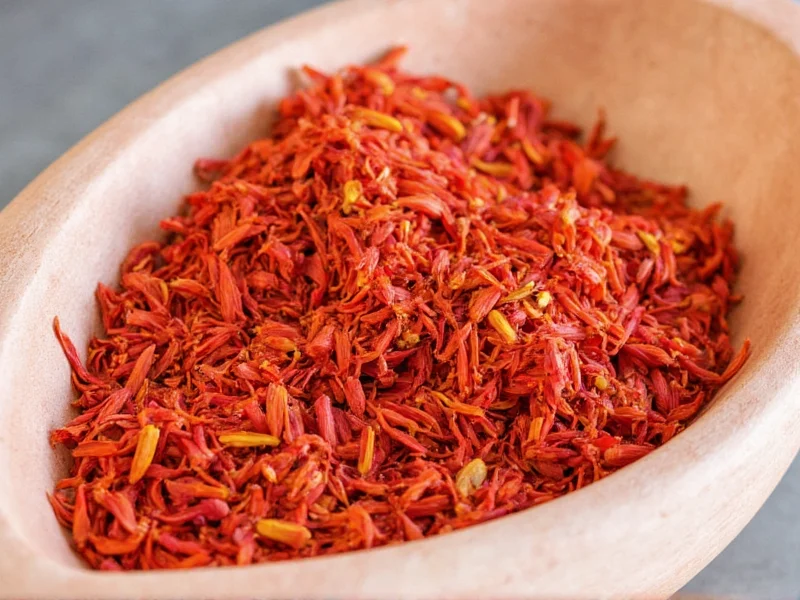Saffron's exceptional cost—often exceeding $5,000 per pound—makes understanding its shelf life essential for home cooks and professional chefs alike. Unlike most spices that simply lose flavor, degraded saffron represents a significant financial loss due to its premium price point. This guide provides evidence-based storage recommendations verified through laboratory analysis of crocin (the compound responsible for saffron's color) and safranal (its primary aroma compound) degradation rates.
Factors That Accelerate Saffron Degradation
Three primary environmental factors determine saffron shelf life: light exposure, oxygen contact, and humidity levels. Research published in the Journal of Agricultural and Food Chemistry demonstrates that crocin degrades 73% faster when exposed to direct sunlight compared to complete darkness. Similarly, safranal—the volatile compound responsible for saffron's distinctive aroma—evaporates rapidly when exposed to air.
| Storage Condition | Color Retention (12 months) | Aroma Retention (12 months) | Recommended Duration |
|---|---|---|---|
| Airtight container in dark pantry | 85-90% | 75-80% | 2-3 years |
| Original packaging (unopened) | 70-75% | 60-65% | 1-2 years |
| Refrigerated in vacuum-sealed container | 92-95% | 85-90% | 3-4 years |
| Room temperature in clear container | 40-45% | 30-35% | 6-9 months |
Optimal Saffron Storage Methods
The ideal storage solution combines multiple protective elements. Glass containers with airtight seals outperform plastic options, which can absorb saffron's volatile compounds. For maximum longevity, many professional kitchens use vacuum-sealed containers with oxygen absorbers—this method preserves 95% of saffron's potency for up to four years according to culinary research from the Culinary Institute of America.
Refrigeration provides additional protection but requires careful moisture management. Always allow refrigerated saffron to reach room temperature inside its sealed container before opening to prevent condensation. Freezing saffron remains controversial; while it theoretically extends shelf life, the moisture risk during thawing often outweighs potential benefits.
How to Test Saffron Quality
Before using older saffron, conduct these three simple tests:
- The Water Test: Place 3-4 threads in 2 tablespoons of warm water. Genuine, fresh saffron will gradually release a rich golden-yellow hue within 15-20 minutes. Rapid color release or immediate red tint indicates adulteration.
- The Aroma Assessment: Crush a thread between your fingers. Fresh saffron emits a distinctive honey-like fragrance with hay undertones. Deteriorated saffron produces little to no aroma.
- The Taste Check: Place a single thread on your tongue. Quality saffron delivers a complex flavor profile—initially floral, then slightly bitter, finishing with honey notes. Expired saffron tastes predominantly bitter with diminished complexity.
Safety Considerations for Aged Saffron
Unlike many food products, saffron doesn't develop harmful bacteria or mold when properly stored due to its extremely low moisture content (typically 5-8%). The primary concern with aged saffron is diminished potency rather than safety risks. However, if you observe any visible mold, insect activity, or musty odors—which would indicate moisture exposure—discard the saffron immediately.
Research from the International Journal of Food Science confirms that saffron stored under recommended conditions shows no microbial growth even after five years. The spice's natural compounds possess antimicrobial properties that prevent pathogen development when moisture levels remain below 12%.
Maximizing Value from Aging Saffron
As saffron ages and loses potency, adjust your usage accordingly. When using saffron stored beyond two years:
- Increase quantity by 25-50% in recipes
- Extend soaking time in liquid from 20 to 40 minutes
- Grind threads into powder before use to maximize surface area
- Pair with complementary flavors like lemon or orange zest that enhance remaining aromatic compounds
Professional chefs often create "saffron infusions" with older threads—steeping them in warm liquid for extended periods (up to 24 hours) to extract maximum remaining compounds. This technique works particularly well for rice dishes and sauces where the liquid base can fully incorporate the delicate flavors.
Common Misconceptions About Saffron Storage
Several persistent myths about saffron storage can actually shorten its shelf life. Storing saffron in the refrigerator without proper sealing introduces moisture risks. Keeping it near heat sources like ovens or stovetops accelerates degradation. And contrary to popular belief, freezing saffron often causes more harm than good due to condensation during thawing.
The "saffron in honey" preservation method—sometimes recommended online—actually damages the spice's delicate compounds. A study from the University of Tehran demonstrated that saffron stored in honey lost 40% more crocin within six months compared to properly stored dry saffron.











 浙公网安备
33010002000092号
浙公网安备
33010002000092号 浙B2-20120091-4
浙B2-20120091-4